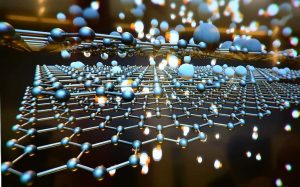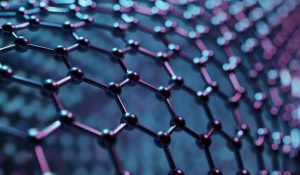In 2004, scientists Andre Geim and Konstantin Novoselov of the University of Manchester performed a simple experiment that opened up a new future, changing the world. They played with the graphite that’s in your pencil tip.
From simple experiments
Geim and Novoselov wanted to see if they could isolate a sheet of graphite, an unimaginably thin layer of carbon just one atom thick. They did the following:
“You put the tape over graphite or mica and peel off the top layer. There are pieces of graphite flaking off on your tape. Then you fold the tape in half and stick it on the pieces above and separate them once. more. And you repeat this process 10 or 20 times. Each time, the pieces break down into thinner and thinner pieces. In the end, you’re left with very thin pieces that stick to your bandage.” Shared by Andre Geim for BBC.
Experiments to separate an ultra-thin layer of coal have created a metamaterial.
And this method has really worked. Two scientists have isolated a single-layer (monolayer) sheet of carbon – and it is graphene, an allotropic form of carbon, a completely new material, 98% transparent, the hardest (200 times stronger. steel), the lightest (7.5 times stronger than air) and the best conductor of electricity on the planet. And best of all, graphene is made from carbon, the fourth most abundant element in the universe, so it’s unlikely to be exhausted.
Where does that feature come from?
Each carbon atom in the graphene sheet is tightly bound to three other atoms at identical angles, forming a flat honeycomb-like structure. Similar to diamond – graphene is a three-dimensional carbon crystal where every atom is connected to four neighbors – these strong bonds give the structure incredible strength.
The structure of graphene makes it superior to other materials.
Each carbon atom has 4 outermost electrons but only 3 electrons are shared with the surrounding C atoms. The remaining electron is free to move in three dimensions, allowing it to pass charge through the graphene sheet with almost no resistance, making graphene the best conductive material known to man. And with the above structure, graphene is only about 1 atom thick, extremely light and 98% transparent.
With these superior features, graphene is being applied a lot in life to make batteries, produce computer circuits, semiconductor components in smartphones,…. And in the future, it is possible to create biological grafts for application in the biotechnology industry.

